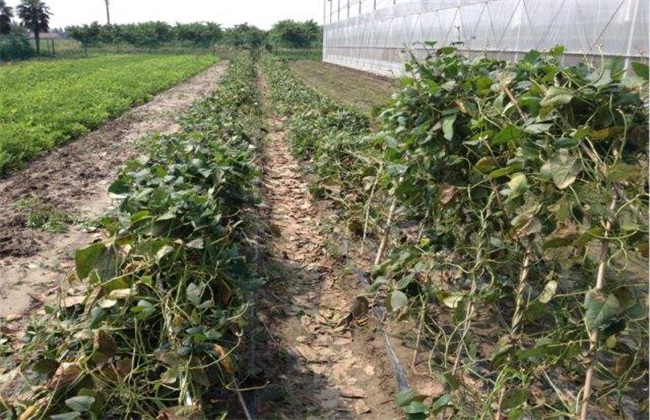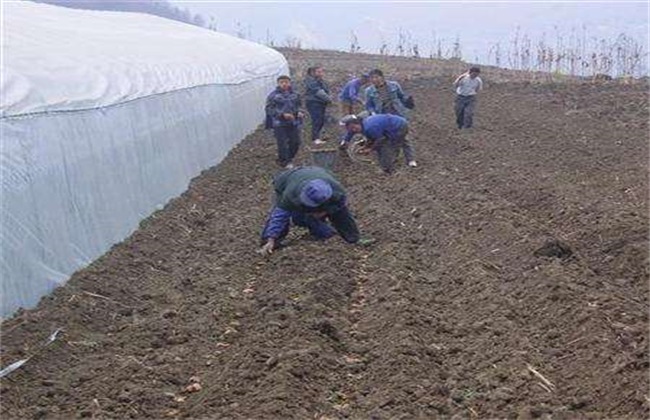How to manage vegetables in typhoon weather
Recently, the coastal provinces of our country have suffered very serious typhoon weather. It has a great impact on people's lives, and there will even be some casualties. And it has also caused serious harm to people's economy. Especially for some vegetable growers, it is difficult for people to ensure safety, let alone vegetable crops. So how to manage vegetables in typhoon weather? Let's take a look at it with the editor.

1. Preventive measures
Reinforcement and prevention
First of all, we have to pay attention to the weather changes. Before the typhoon comes, there are usually relevant news and warnings issued. When we know that a typhoon is coming, the first thing we should do is to strengthen and guard against it, especially climbing and high-pole crops such as melons and beans. The nursery bed should take measures to prevent wind and rain, and if it has not yet emerged, it should be covered with thin film to prevent Rain Water from washing the soil and causing no seedlings to emerge. If the typhoon level is greater than 10, then the greenhouse film should be removed in advance to avoid damage to the greenhouse facilities. If the wind is not strong, then it is necessary to strengthen the greenhouse to avoid the collapse caused by the wind.
Other precautions
Vegetable cultivation is the most avoid stagnant water and waterlogging, and typhoon weather usually brings torrential rain. Therefore, we should also pay attention to do a good job in flood prevention and waterlogging prevention in the vegetable greenhouse, check the ditches around the greenhouse, do a good job in dredging the canals, ensure that the canals are smooth without blockage, and reduce the hidden danger of stagnant water in the vegetable fields. Then for some vegetables that can be harvested early, it is best to harvest them in advance. This can effectively reduce the loss, avoid the damage of too many vegetables, or even the phenomenon of no harvest.
2. Measures to resume production after typhoon
Vegetable management
After the typhoon and rainstorm, it is necessary to do a good job of drainage, discharge the stagnant water in the field in time and remove the remains of the plant. For vegetables that are still useful, clean the sand, and then straighten up the plants that have fallen down because of the typhoon. Then the soil is ploughed to avoid soil consolidation, improve soil permeability and promote root growth as soon as possible. Enhance the nutrient and water absorption capacity of the soil. Then combine with ploughing to cultivate the soil, after the typhoon, the humidity in the field is high, and the plant is vulnerable to germs, so we should also pay attention to the prevention and control of diseases and insect pests.
Rush to take it to market
The vegetables that can be harvested in the field should be snapped up and listed on the market. Then ploughing in sunny days, using batch sowing method to grow some fast-growing vegetables suitable for the season. For example, hollow cabbage, pakchoi, etc., and then use liquid foliar fertilizer, potassium dihydrogen phosphate and so on for extra-root topdressing. To promote the recovery of vitality as soon as possible, or the appropriate addition of brassinolide to promote the growth of vegetables and enhance the stress resistance of plants.
The above is a brief introduction to how to manage vegetables in typhoon weather. For more information, please continue to follow us!
Related
- Where is it suitable to grow horseradish in China? it is expected to see the middle altitude horseradish in Alishan.
- How to prevent tomato virus disease reasonably? (Control methods included)
- Many people like to plant towel gourd on the balcony. What are the main points of this method and management?
- What crops can chili peppers be mixed with?
- Fertilization techniques and matters needing attention in Tomato
- What are the grafting techniques for peach seedlings in spring?
- Harm and control methods of root swelling disease of Chinese cabbage
- What are the pests of sweet potatoes? How to prevent and cure it?
- Symptoms, causes and Control methods of navel Rot in Tomato
- The cause of "Cucumber rotten bibcock" in Farmers' planting Cucumber and its Control Plan



